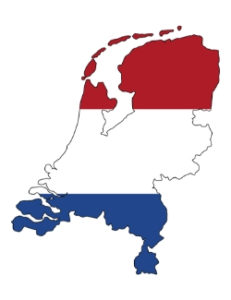
Mar 21, 2019
Variable rate technology pays off in the Netherlands
 University of Wageningen researcher Corné Kempenaar and his colleagues at the Department of Agro Systems Research conducted a study to assess the cost benefit of adopting five variable rate application (VRA) technologies in potato production.
University of Wageningen researcher Corné Kempenaar and his colleagues at the Department of Agro Systems Research conducted a study to assess the cost benefit of adopting five variable rate application (VRA) technologies in potato production.
Results, which were published in Potato Research last year, show that VRA technologies do pay off under practical conditions in The Netherlands. The five VRA technologies that produced the most rewarding results were planting, soil herbicide weed control, nitrogen side dressing, late blight control and haulm killing.
VRAs analyzed
Although the researchers analyzed 13 potential technologies, they ended up selecting just five, which they selected based on proof of concept and on-farm test results. Each of the five VRAs uses spatial data in the form of either soil maps or biomass index maps.
The first two VRAs, planting and soil herbicide weed control, involved the use of soil maps, which were used in combination with other information to create a variable rate map. The other three used crop biomass index maps, also in combination with other information to make a task map.
“This multiple use of data helps to make the cost-benefit assessment positive because costs can be spread over several actions and investments will pay off faster,” the report concluded.
Optimal depth and spacing of tubers depends on a variety of conditions, including soil, climate and tuber variety, as well as the objective of the farmer. Using modern planters, growers are able to vary planting density to match conditions.
“In the EU IoF2020 project, we studied variable rate seeding of potatoes based on lutum content of the soil, distance to tram line of the sprayer and yes or no shading by obstacles like trees,” said Kempenaar in the paper. “Where lutum content of the field was relatively low and/or shading by trees was expected, seed spacing was larger and vice versa.”
Precision agriculture has also promised to help farmers reduce herbicide use. The researchers evaluated the use of variable rate applications of herbicides in potatoes by looking at soil maps. Specifically, they found that soil herbicide applications could be reduced in zones where soil organic matter and/or lutum content are low as they are more effective in these zones. Their research showed that reductions of 20 to 40 percent were possible.
Of the five technologies, potato haulm killing was the most widely tested in on-farm research. In The Netherlands, standard practice for killing the potato canopy is to apply a defoliant herbicide. Using crop biomass index maps to apply defoliants more prescriptively resulted in reduced herbicide use of 20 to 47 percent. Calculating for the average and considering the average cost of commonly used products, the researchers found that costs could be reduced by as much as 90 percent if satellite images are available.
For both VRA seeding and soil herbicide applications, the researchers found that a 2 to 4 percent yield increase was needed in order for the grower to see a cost benefit.
There was a cost-benefit ration seen in VRA fungicide use for managing late blight in potato as well. Dutch farmers typically apply fungicides every 5 to 10 days throughout the growing season to prevent late blight infection and damage. Using crop reflection sensors that assess aboveground leaves and stems, however, producers can select more precise dosage. The more biomass present, the more fungicide is needed.
“VRA fungicide trials in potato showed reductions in herbicide use between 20 and 30 percent,” Kempenaar wrote. “VRA fungicide use in potato has a positive cost-benefit ration thanks to multiple applications (84 vs 25 € ha -1).”
Using VRAs for pesticide and N-fertilizer, growers averaged about 25 percent in savings when compared to the reference standard practice.
It should be noted that the report was clear that conclusions are based on the assumption that the costs of sensor data are shared over different variable rate applications and no extra investments are needed in sprayer and spreader technology.
The entire report is available at bit.ly/VRA-Report.
— Global Perspectives takes a look at the international potato industry and developments that could impact U.S. growers and shippers. For more, click here.









